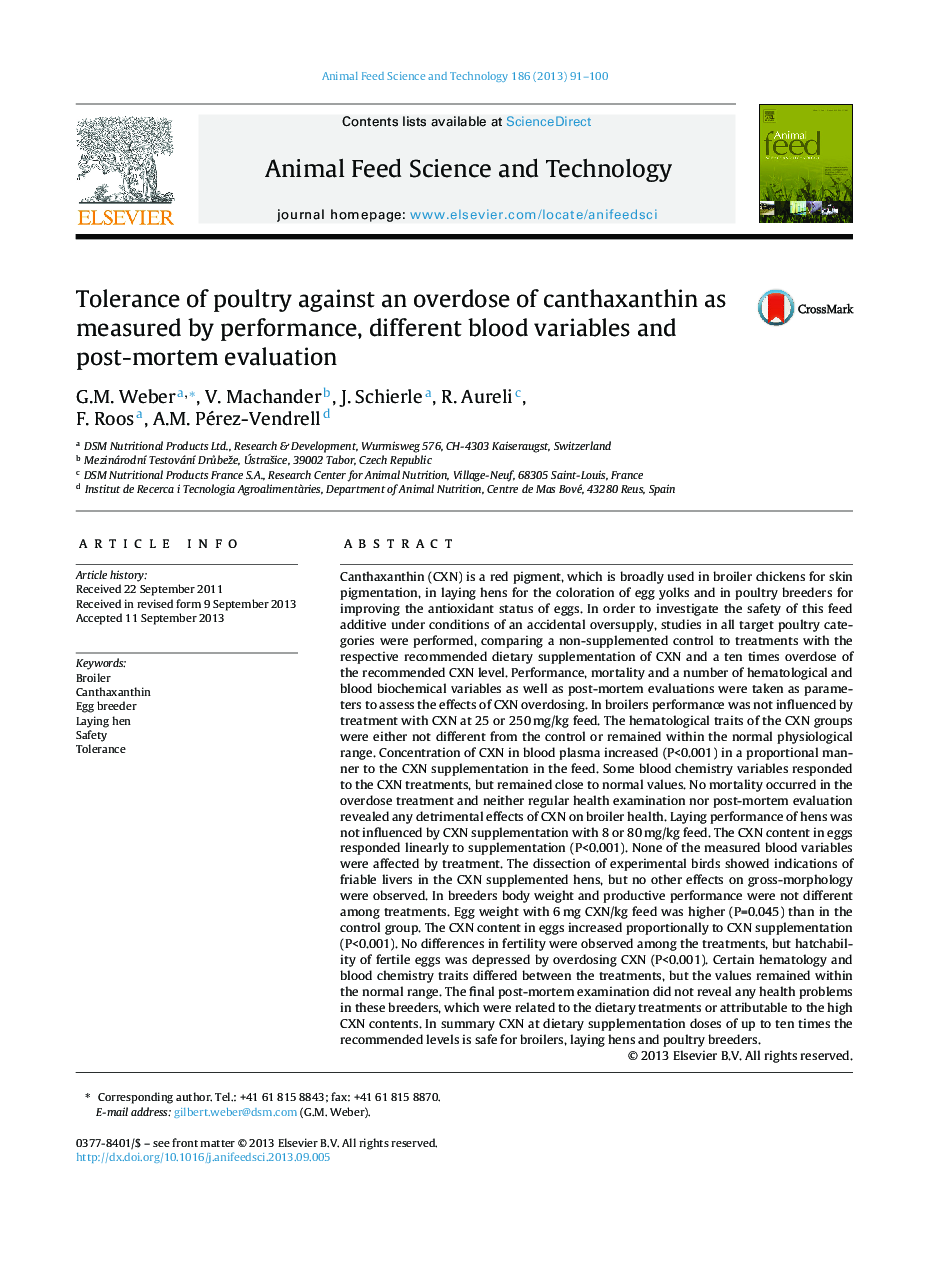| Article ID | Journal | Published Year | Pages | File Type |
|---|---|---|---|---|
| 2419691 | Animal Feed Science and Technology | 2013 | 10 Pages |
Canthaxanthin (CXN) is a red pigment, which is broadly used in broiler chickens for skin pigmentation, in laying hens for the coloration of egg yolks and in poultry breeders for improving the antioxidant status of eggs. In order to investigate the safety of this feed additive under conditions of an accidental oversupply, studies in all target poultry categories were performed, comparing a non-supplemented control to treatments with the respective recommended dietary supplementation of CXN and a ten times overdose of the recommended CXN level. Performance, mortality and a number of hematological and blood biochemical variables as well as post-mortem evaluations were taken as parameters to assess the effects of CXN overdosing. In broilers performance was not influenced by treatment with CXN at 25 or 250 mg/kg feed. The hematological traits of the CXN groups were either not different from the control or remained within the normal physiological range. Concentration of CXN in blood plasma increased (P<0.001) in a proportional manner to the CXN supplementation in the feed. Some blood chemistry variables responded to the CXN treatments, but remained close to normal values. No mortality occurred in the overdose treatment and neither regular health examination nor post-mortem evaluation revealed any detrimental effects of CXN on broiler health. Laying performance of hens was not influenced by CXN supplementation with 8 or 80 mg/kg feed. The CXN content in eggs responded linearly to supplementation (P<0.001). None of the measured blood variables were affected by treatment. The dissection of experimental birds showed indications of friable livers in the CXN supplemented hens, but no other effects on gross-morphology were observed. In breeders body weight and productive performance were not different among treatments. Egg weight with 6 mg CXN/kg feed was higher (P=0.045) than in the control group. The CXN content in eggs increased proportionally to CXN supplementation (P<0.001). No differences in fertility were observed among the treatments, but hatchability of fertile eggs was depressed by overdosing CXN (P<0.001). Certain hematology and blood chemistry traits differed between the treatments, but the values remained within the normal range. The final post-mortem examination did not reveal any health problems in these breeders, which were related to the dietary treatments or attributable to the high CXN contents. In summary CXN at dietary supplementation doses of up to ten times the recommended levels is safe for broilers, laying hens and poultry breeders.
